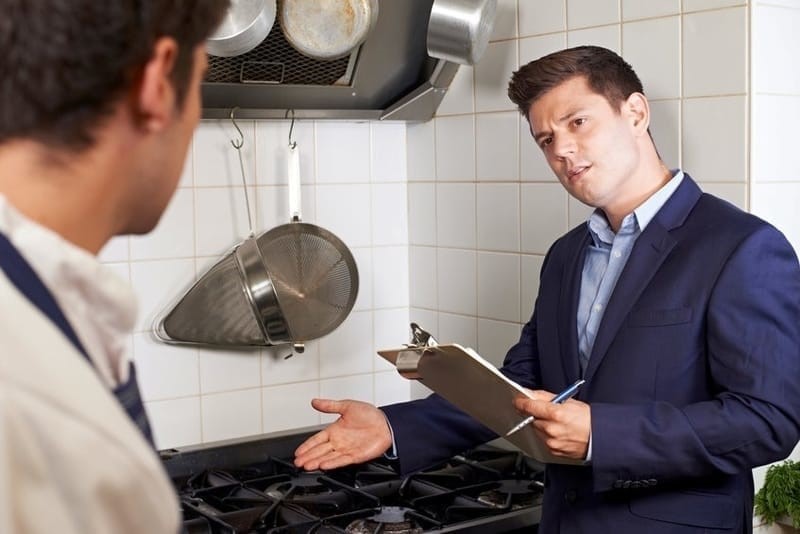The kitchen of most food businesses can be a busy place, and often you may have vendors, maintenance staff and other non-food service personnel either working or passing through your kitchen. Since these guests are not technically food-service workers, is there any outlined food safety management training necessary for these individuals? Food safety managers are obligated to cover every foodborne illness risk, and this may mean taking the time to assess what steps need to be taken for non-staff kitchen visitors in your establishment.

Food Safety Precautions for Visitors in Food Preparation Areas
Before we take the time to discuss precautions, it may be important to outline who should and should not be visiting your kitchen. There are many individuals who have business there, but before we invite grandma and the neighbors to hang out on the line there should be some ground rules.
When considering outside visitors, kitchen managers need to ask staff to respect the boundaries of the kitchen. If visitors don’t have a business-related purpose in food preparation areas, they should be asked to wait in public spaces. It’s not that we’re against friends and family stopping by; it just adds potential safety risks and possible foodborne-illness hazards to have untrained personnel in the kitchen.
Outside individuals who may have business in your establishment may include:
- Vendor representatives
- Delivery personnel
- Maintenance staff
- Corporate managers
Your vendors and food service suppliers should already have some situational awareness in the kitchen and may know better than to get in the way in a busy environment. However, if they’re handling food that is being inspected, sampled or delivered, it’s best to ensure bare-hand contact rules are followed. The same goes for delivery drivers. Most of these types of kitchen visitors have already been trained in some respects for food safety, but it’s always prudent to keep an eye out for potential contamination risks.
If you have planned maintenance whether it’s hood vent cleaning, equipment repair or any other type of work being done in your kitchen that does not involve food preparation, take steps to ensure that all food product is removed from areas where work is being done. Even if it’s something as simple as having new shelving installed in dry storage, the potential for contamination can be high in these situations.
Finally, larger food businesses, especially those with multiple locations, may have corporate higher-ups stop by. Most of these types may not have had food safety management training but may look to get involved in some food preparation activities during their time in your kitchen. Be prepared to respectfully ask them to not handle food if that is not the nature of their visit.
How do you deal with visitors to your establishment?


